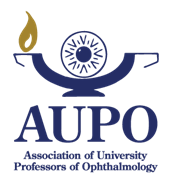Abstract
Given the low rates of under-represented minority (URM) residents[1] and practicing physicians[2] in ophthalmology, ophthalmology training programs in the United States have been charged with increasing diversity to better represent our population. There have been great efforts from the Association of University Professors of Ophthalmology and the American Academy of Ophthalmology to expand the pipeline, particularly through the Minority Ophthalmology Mentoring program.[3] Other groups such as the Rabb Venable Research Foundation and the Student National Medical Association have also been crucial in encouraging and supporting URM students. Initiatives such as the Einstein Enrichment Program for 7th to 12th graders and the Diversity Student Summer Research Opportunity Program for college juniors and seniors at our institution work to encourage URM students to go into medicine and biomedical sciences at an earlier stage. However, once URM students are in the pipeline as potential future ophthalmologists, they may encounter barriers in the admissions process based on traditional metrics such as United States Medical Licensing Examination (USMLE) step scores and selection into Alpha Omega Alpha.[4] We believe it is the responsibility of residency program leadership to conduct the admission process with an eye toward matching qualified URM students. In our program at Montefiore Medical Center/Albert Einstein College of Medicine, we have successfully increased representation in our residency program. We would like to share our process as a potential model for this endeavor.
In the January 2018 match, the SF Match (San Francisco, CA) began allowing an optional notation by students as to whether they came from an under-represented background. Starting the following match cycle, we began a holistic review of applications from URM students, which has been demonstrated to result in more diverse classes by Einstein's medical school admission team.[5] As defined by the Association of American Medical Colleges, “holistic review refers to mission-aligned admissions or selection processes that take into consideration applicants' experiences, attributes, and academic metrics as well as the value an applicant would contribute to learning, practice, and teaching. Holistic Review allows admission committees to consider the “whole” applicant, rather than disproportionately focusing on any one factor.”[6] On a practical level for our program, this means that every application from a URM applicant is read in its totality, including scores, grades, personal statements, and letters of recommendation. All scores and grades are checked to meet basic criteria for predicted success in residency, typically meaning that the student did not need to repeat any course work, had a USMLE step 1 score above or close to the national average (approximately 230 for the years when step 1 scores were available), and was at least in the top two-thirds of their medical school class. The Medical Student Performance Evaluation was reviewed to make sure there was no professionalism issue or need for remediation. Letters of recommendation were reviewed to assure there were no concerns from advisors and mentors. Personal statements and letters of recommendation were read for insight into the students' journeys, and factors such as “distance traveled” were considered. In addition, at our program, we serve a predominantly black and Hispanic community in the poorest county in our state, where our patients and neighbors have many significant health issues. Thus, when reviewing applications, we appreciate a commitment to serving the underserved, whether that is through volunteer work, prior employment, or lived experience. We are typically able to identify evidence of this commitment in the applications of our URM applicants, in addition to many of our non-URM applicants. A final consideration for being granted an interview is having been born or raised in the Bronx or having spent significant time here during their formative years.
In the initial years of our holistic reviews, we were able to match 2 URM students in a class of 5 and 1 URM student in the following class of 5. In 2020, with the change to virtual interviews, we adjusted our screening process from having multiple people each read one-quarter to one-fifth of the entire pool to the program director (PD) and associate PD (APD) reading all applications, each reviewing half of the applications completely as well as confirming the applicants selected by the other director. We decided to limit application review to the PD and APD to avoid the possibility of different criteria being used for review by different readers. As described above, the majority of our applicants have excellent credentials, so we do not have a problem with unqualified applicants being selected for interviews and have not had any issues with acceptance of the applicants from the other members of the interviewing committee. From 2020 on, every application from a URM student was reviewed in a holistic manner by the PD or APD. A detailed outline of our procedure for reviewing applications from URM students can be found in [Table 1], and we followed the same process in 2021.
This effort to invite more UR
Received Date
April 27, 2023
Accepted Date
August 10, 2023
Online Available Date
September 5, 2023
Recommended Citation
Rosenberg, Jamie B.; Park, Sunju; Gibralter, Richard; Shrivastava, Anurag; and Chuck, Roy S.
(2024)
"Success in Increasing Diversity: One Residency Program's Journey,"
Journal of Academic Ophthalmology: Vol. 15:
Iss.
2, Article 21.
DOI: https://doi.org/10.1055/s-0043-1774401
Available at:
https://www.aupojournal.org/jao/vol15/iss2/21

